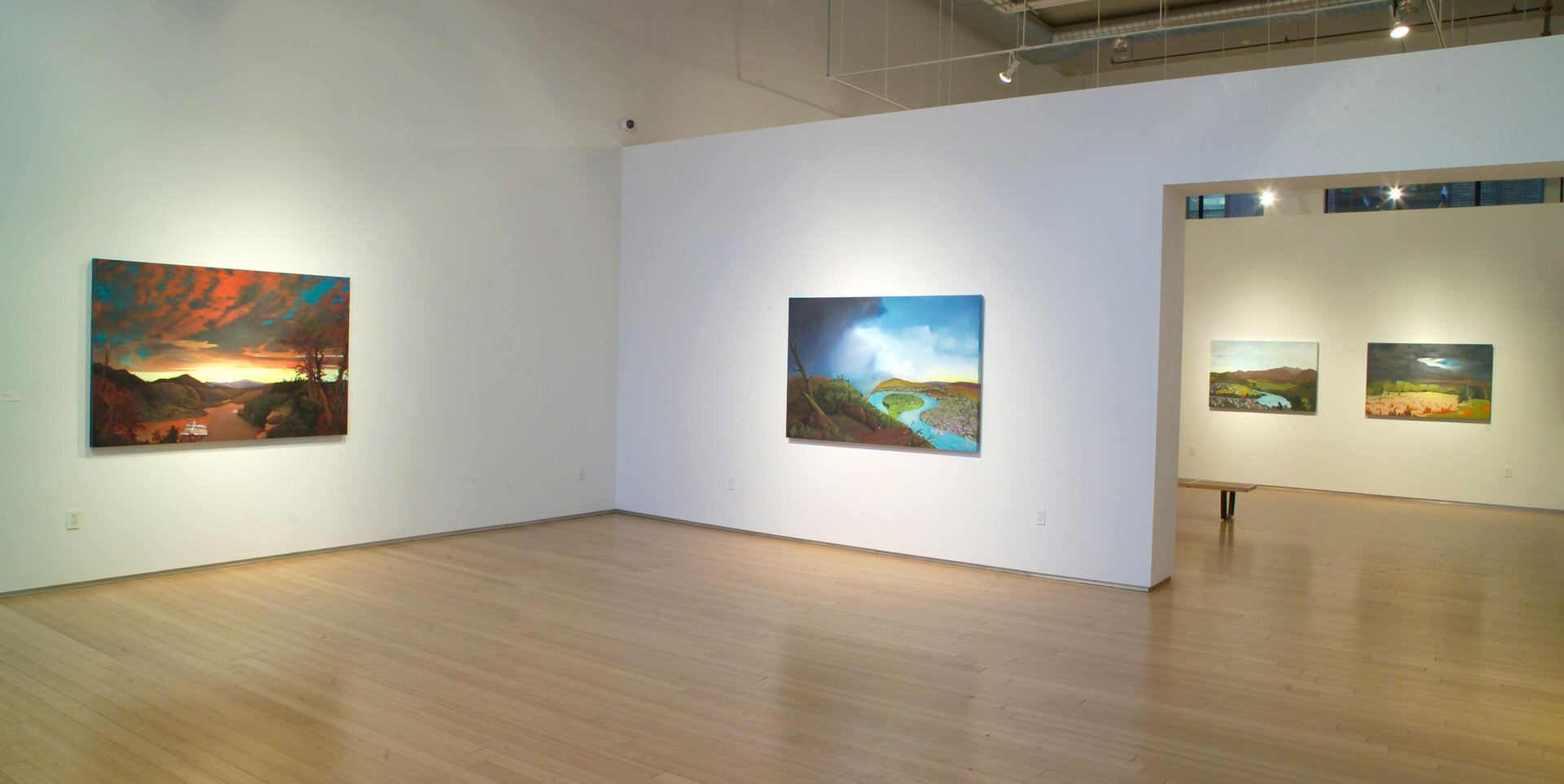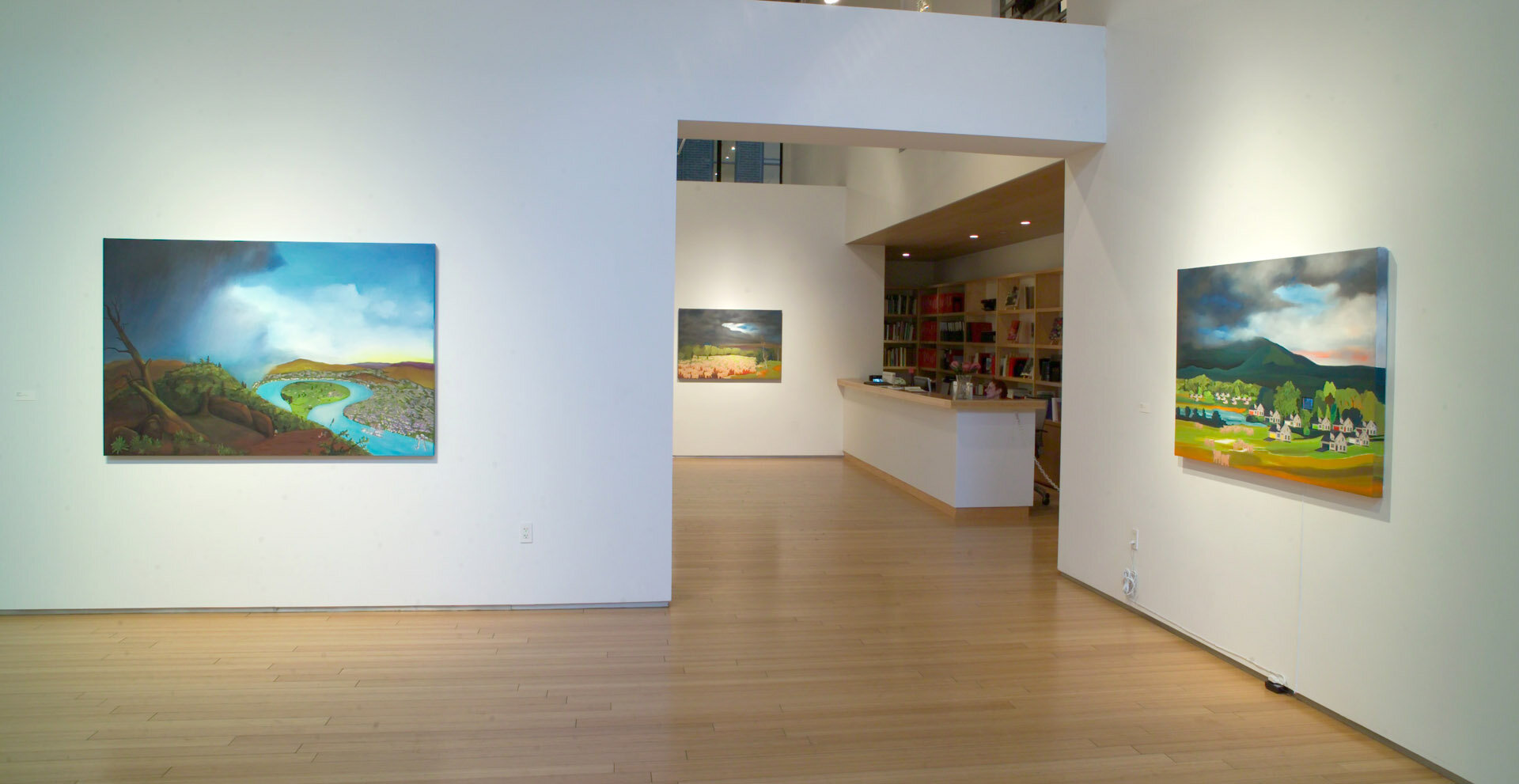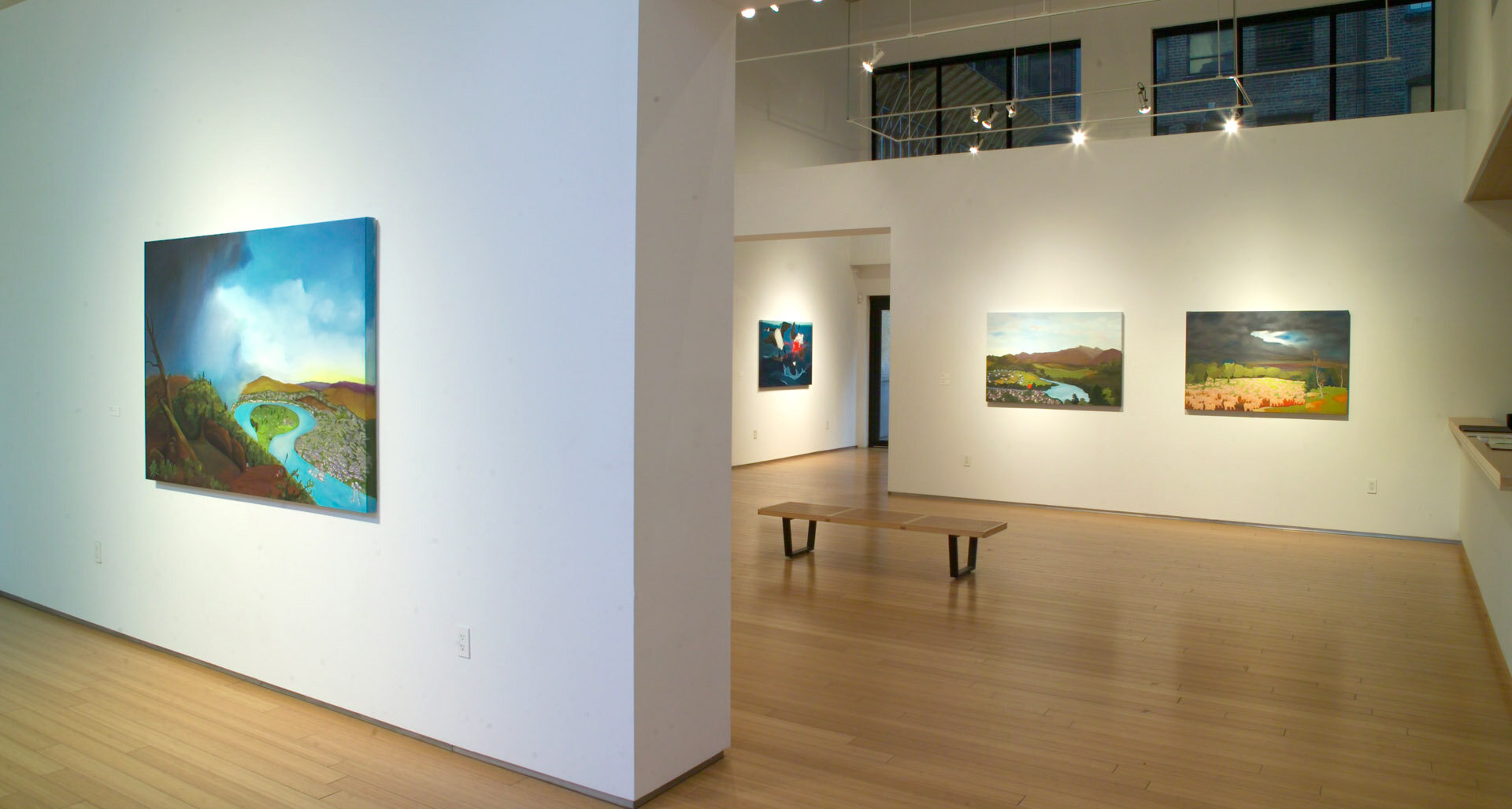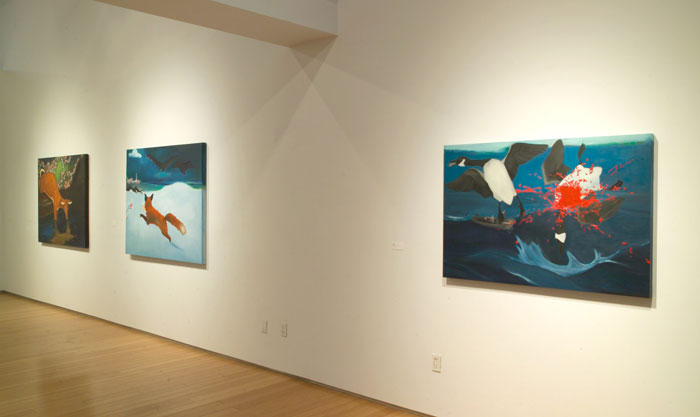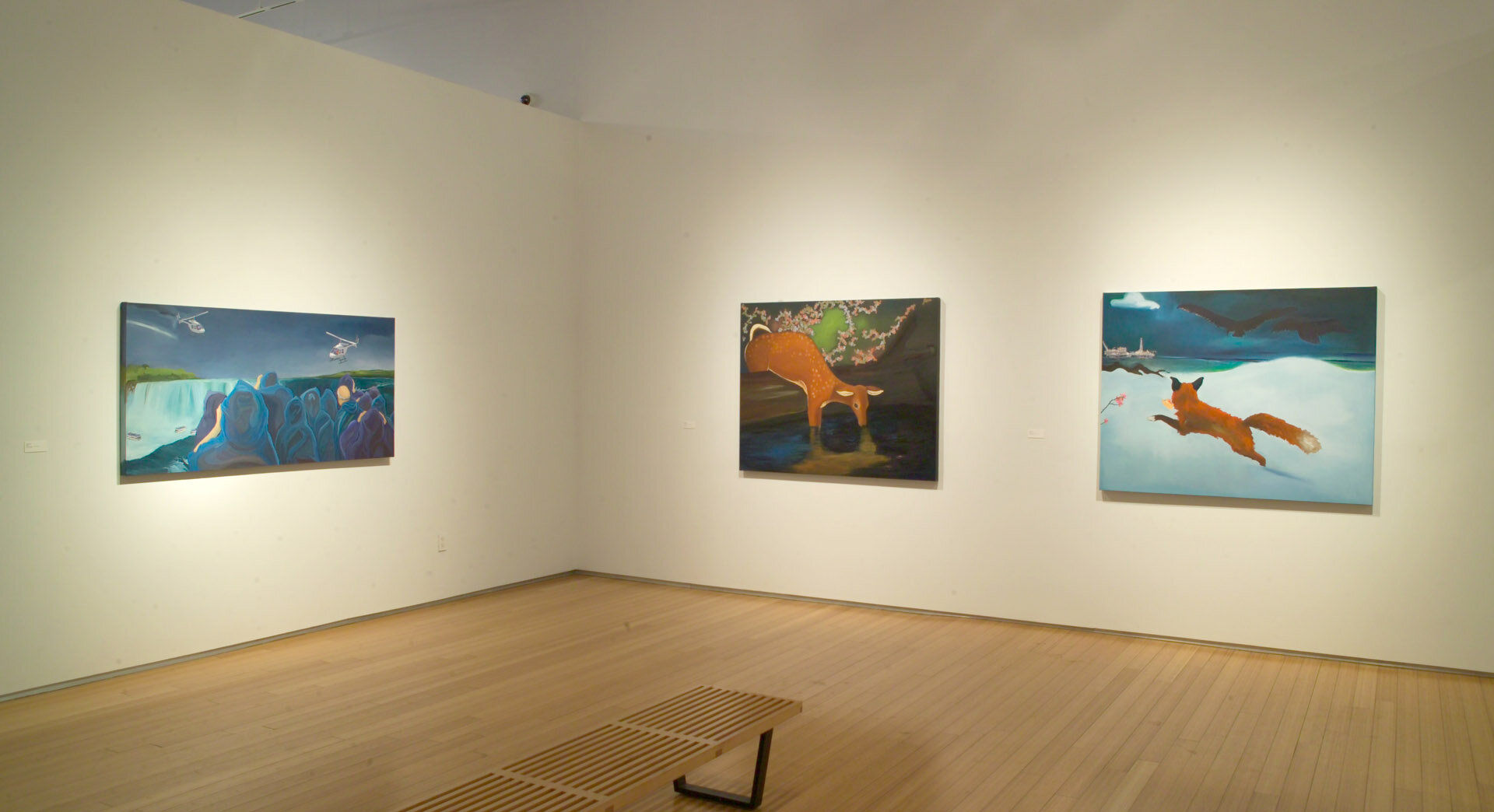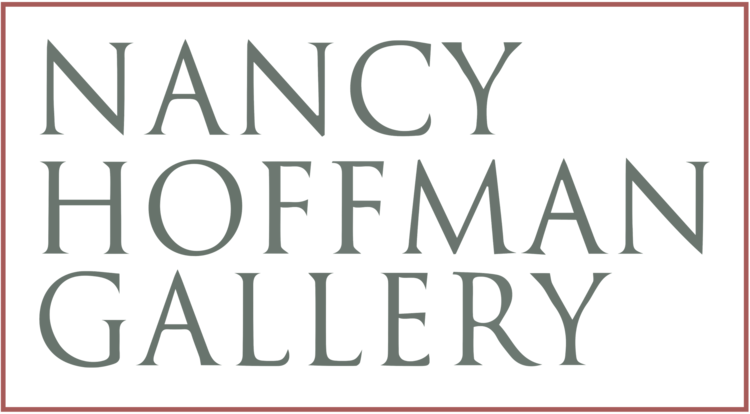Purdy Eaton: The Golden Hour
February 20 - February 19, 2011
“The Golden Hour,” Purdy Eaton at Nancy Hoffman Gallery February 24-April 9, 2011
On February 24, the first exhibition of Purdy Eaton’s paintings, video paintings and photographs opens at Nancy Hoffman, continuing through April 9. With American painting as her starting point, the Hudson River School artists in particular, Purdy Eaton looks at the land these artists celebrated and idealized and sees a different environment, our contemporary world. The title for her show parallels the idyllic landscapes of a bygone era while it refers to both the first and last hour of sunlight in the day. The title is also infused with the artist’s ironic sense of humor, having grown up on a farm in the Midwest. Light was always important to her, to the family and to life on the farm.
Each canvas begins with the work of an American master as a reference point: for example, Purdy Eaton’s “Twilight in the Wilderness” is based on Frederic Edwin Church’s painting of the same name, which conveys a sense of glory and idealism as well as a mood of solitude. The mood of loneliness and beauty preside in the charged sunlit sky in the artist’s painting. Along the shoreline the artist has painted tiny--almost playful looking--colorful words from Bruce Nauman’s 1984 neon work, “One Hundred Live and Die,” a signifier of development for Eaton. The old-fashioned showboat-like cruiser is brimful of bleary-eyed revelers floating down the river, oblivious to the majestic world that surrounds them, yet another comment on contemporary culture, and how the party mood can preside and obfuscate issues of concern.
Frederic Edwin Church’s 1857 painting “Niagara”--the most recognized image of the American sublime--depicts the powerful vista of the Falls without any evidence of humanity. In Eaton’s “Niagara,” the sublime, in her inimitable sense of humor, includes tourists, helicopters, hulking humans in blue raincoats clustered in front of the sights and sounds and power of the Falls itself.
In the artist’s “American Habitat” photographs, Eaton depicts images of the 300-foot high windmills that now dot the Midwest, in eerily pale whitish skies; the sculptural forms become quietly and hauntingly eloquent as comments on man’s further impact on the land, in which a cow, subtly tattooed by the artist, looks at the viewer.
Purdy writes about this new body of work: “I grew up on a farm in rural Indiana on land that has been in my family for five generations and over one hundred years. The bucolic landscape of my childhood has since been dissected by roads and is rapidly being consumed by “starter” homes and strip-malls. Driving along the new highway that guillotined our farm, billboards have sprouted where trees once grew and subdivisions thrive where farms once did. The contemporary American landscape is a Transcendentalist nightmare.
“While retaining significant visual content and without dramatically altering the phenomenological experience of the viewer, my work deconstructs art historical paintings in order to critique and question issues in contemporary culture, specifically those relating to our subjective and evolving understanding of progress and the value we place on the natural world. The logic and established iconography under which these 19th century American paintings were created has changed dramatically. These works are being reconstructed within the cultural and environmental context of our time –-postmodern culture and capitalist society. As the paradigm has shifted away from the science-faith-nature trinity toward progress and the advancement of society, the relationship between humans and the natural world has been transformed.
“A central focus of my work is time, how it is perceived in our world, particularly
how we measure it through our humanity and the interplay, and often harsh dichotomy, between the human world and the natural world. “American Habitat,” the title of my current series, investigates humanity and its relationship to nature-- combative, symbiotic or synergistic–-and how this interaction relates to time and progress.”
The artist’s work has been shown at Arlington Center for the Arts, Massachusetts; Stamford Art Association, Connecticut; Art Museum of Greater Lafayette, Indiana; Institute for Sustainable Cities, City University of New York, Governors Island as well as many invitational exhibitions in New York. She received an Artist’s Grant, Vermont Studio Center in Johnson and Green People’s Choice Award, City University of New York.
She received an M.F.A. from Hunter College, City University of New York; an M.P.H. from Yale University, New Haven, Connecticut and a B.S. from Indiana University, Bloomington. Her studies include an Overseas Study Program, University of Kent Canterbury, Kent, United Kingdom.
Purdy Eaton was born in Lafayette, Indiana. She lives and works in New York City.
For additional information and/or photographs, please call 212-966-6676 or email the gallery at info@nancyhoffmangallery.com
Yours sincerely,
Nancy Hoffman
